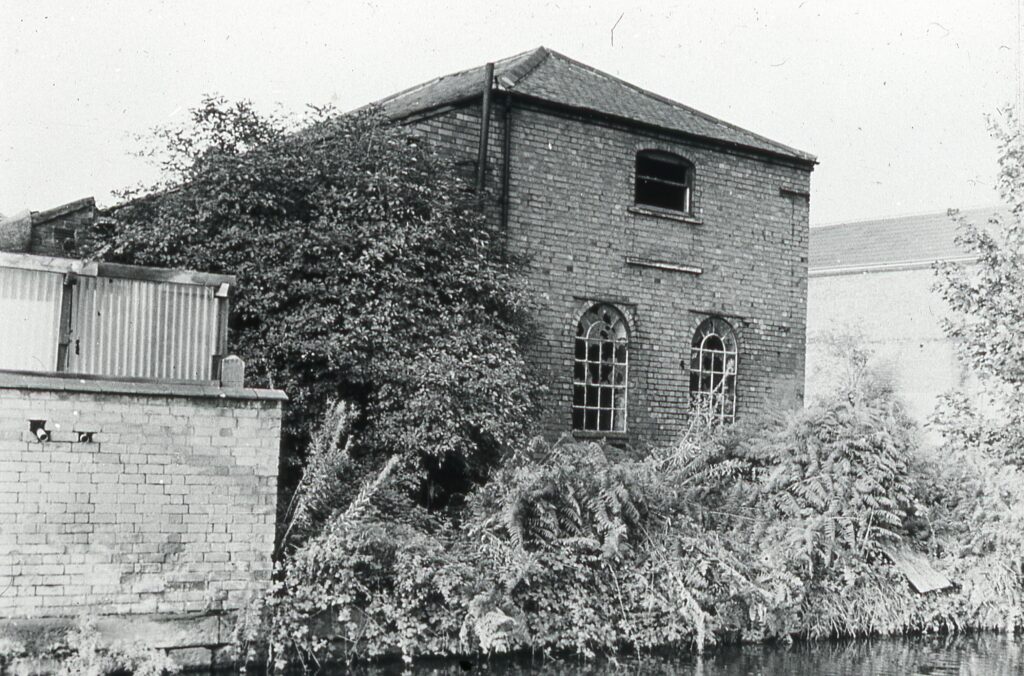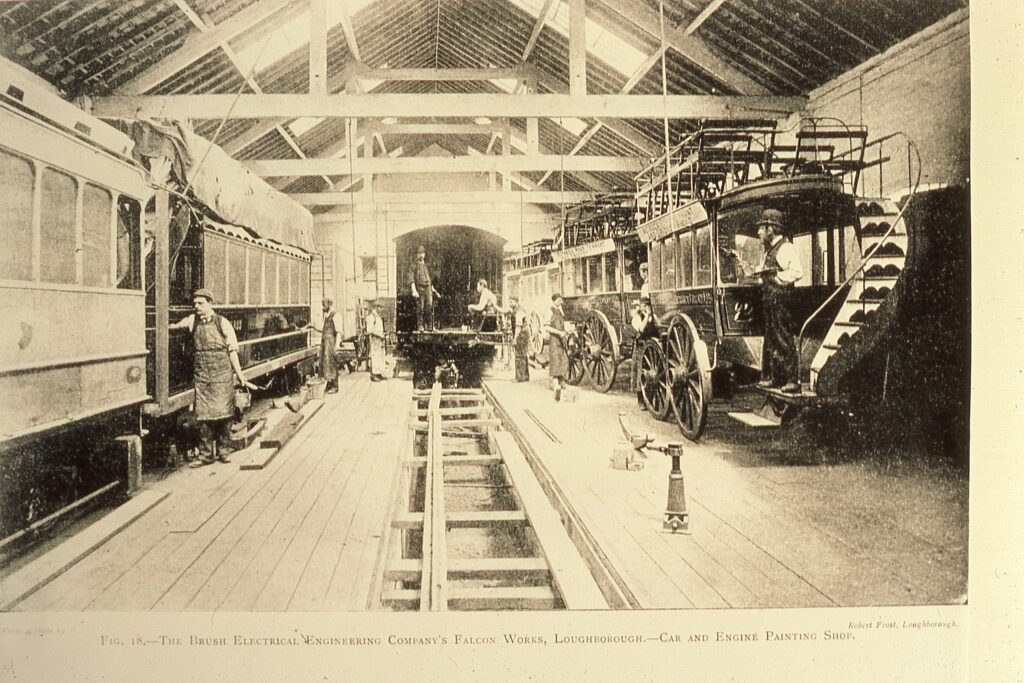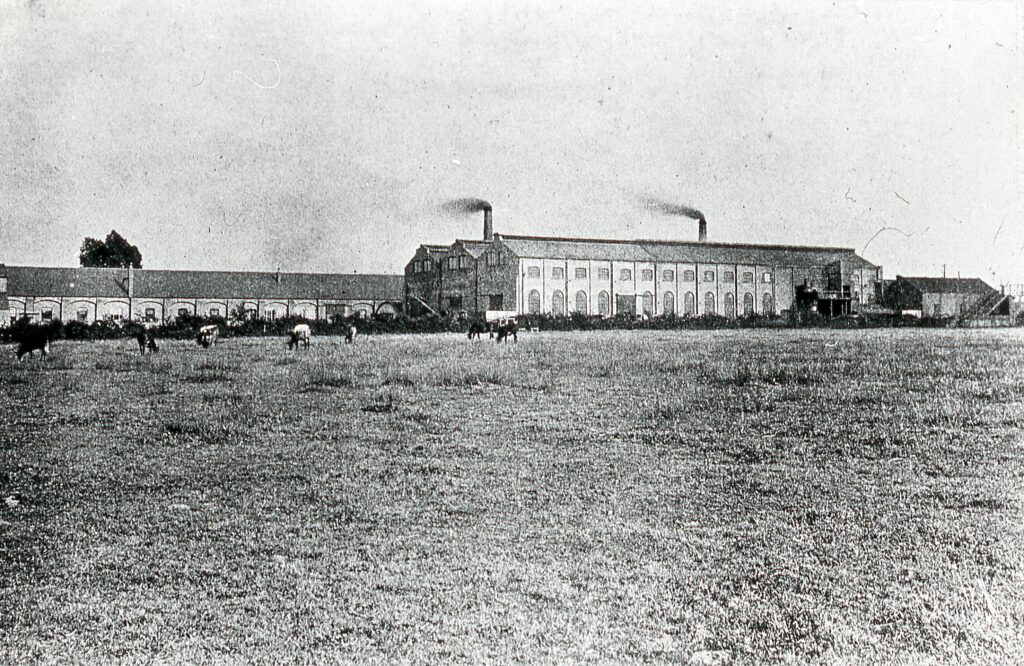Origins of the Brush Electrical Engineering Co Ltd
22 June 2020
To study the history of the Brush Electrical Engineering Company Ltd it is necessary to follow two different paths. One originating in England in the Leicestershire town of Loughborough and the other on the other side of the Atlantic Ocean in the USA city of Cleveland, Ohio.
The origin of the Loughborough operation was a small woodyard c.1851, owned by a Mr Capper, situated between the Derby Road and the Loughborough Navigation near and was known as the Regent Street. This was acquired by Henry Hughes and known as the Falcon Works.
There are a couple of theories of why the name Falcon was used. One theory is that it was the name of a canal fly boat that served the works wharf and the other is that Falcon House was the name of Hughes wife’s former home. The Falcon Works manufactured coachwork including ‘dobbin carts’ and small steam locomotives with boilers locally manufactured by Huram Coltman.
Expansion of the business required a larger site and Hughes transferred his works in 1865 to a new location, alongside the Midland Railway. The Falcon Works name was retained.
Hughes, trading as Henry Hughes and Company Locomotive Engineers, soon acquired a good reputation for the quality of the coachwork and the steam locomotive business also continued although not at the rate of some of the competition. Steam tramway engines were also built. The coachwork part of the business was soon building a steady stream of horse tramcars, railway wagons and horse drawn wagons, but in the 1870s there was a slump in trade and the company was over capitalised.
At this time there were great developments in the fledgling electrical industry and one of the pioneers in this field Charles Francis Brush was developing dynamos and arc lamps and had completed a number of electric lighting installations.
In 1879 he established a UK company in Lambeth London known as the Anglo American Brush Electric Light Corporation. Here his company continued to make a variety of electrical products, to Brush’s own design or those of his chief of test William Mordey. These including dynamos, alternators, transformers, arc-lamps, regulators and even set up an incandescent light bulb manufactory at Portpool Road manufacturing to the designs of Lane-Fox. The Brush products were also used to illuminate many buildings and the Thames embankment was lit by electricity generated from the Brush factory in Belvedere Road.
Back in Loughborough Hughes’ company was taken over by Norman Scott Russell in 1883 and renamed The Falcon Engineering and Car Co Russel continued to build steam tram engines and extended the coachwork production.
By 1889 thoughts turned to the widespread introduction of electric tramcar systems and coincided with the expansion of local electricity schemes replacing gas lighting.
The Brush factory in Lambeth was restricted by the expansion of the railways on the eastern part of its site and was looking for a new home and saw the opportunity to amalgamate with Falcon at Loughborough. In 1889 The Brush Electrical Engineering Co Ltd Was formed with Brush and its workers moving to Loughborough. New workshops, ‘ The London Shops’ were built on the Nottingham Road, or southern, side of the site to house the Lambeth production.
The following years saw Brush becoming a major supplier of both electrical engineering and coachwork. The latter saw Brush as the second largest producer of tramcars in the UK and the biggest producer of tram trucks (bogies or wheelsets).
by Tony Jarram
Honorary Member of Loughborough Library Local Studies Group
See a film of the Brush workers in 1900 here.
Read about a strike at the Brush in 1906 here.

(Brian Hope for the Brush Transport Enthusiast’s Club – Tony Jarram Collection)

(Brush official photograph/Leicestershire Records Office – Tony Jarram collection)

The Falcon Works before the outbreak of World War One. Loughborough Meadows in the foreground were used as an airfield to despatch aircraft built at the works.
(Brush official photograph/Leicestershire Records Office – Tony Jarram collection)
